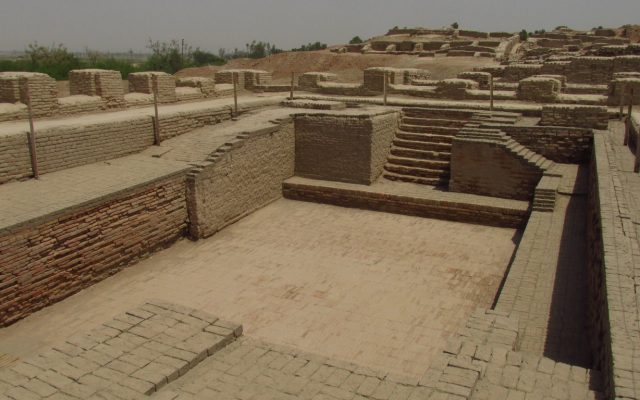The History of Swimming Pools
For centuries, swimming pools have remained a symbol of relaxation, luxury, and recreation. While today’s pools feature cutting-edge technology and custom designs, their origins date back to some of the world’s earliest civilizations. From ancient bathhouses to backyard retreats, let’s explore the fascinating history of swimming pools.
A brief history of swimming pools
Swimming pools have evolved significantly over the centuries, shaped by cultural, technological, and architectural advancements. While early pools served religious, social, and athletic purposes, modern pools emphasize leisure, fitness, and personal enjoyment. The journey of swimming pools through history is both surprising and inspiring.
The first swimming pool?
The oldest known swimming pool dates back over 5,000 years to The Great Bath of Mohenjo-Daro in present-day Pakistan. Built by the Indus Valley civilization, this remarkable structure was made of tightly fitted bricks and a layer of tar to prevent leakage – an impressive engineering feat for its time. Historians believe it was used for religious or purification ceremonies rather than for leisure.
The ancient baths
The Ancient Greeks were the first to use pools for both bathing and exercise, with philosophers like Plato even advocating for swimming as an essential life skill. However, it was the Ancient Romans who took things to another level.
They constructed elaborate public bathhouses featuring heated water, steam rooms, and even libraries. These grand facilities became social hubs where people gathered to relax and discuss politics. The Romans’ love for baths spread across their empire, even reaching Britain, where they built the famous city of Bath, still known for its Roman-built pools today.
The rise of indoor swimming pools
Fast forward to the 19th century, and swimming was becoming more popular in Europe. The first indoor swimming pool, the St. George’s Baths, was built in London in 1828. This marked the beginning of swimming as a competitive sport, leading to the establishment of organized swimming clubs. By the mid-1800s, public swimming facilities were becoming widespread in Britain, encouraging people to embrace swimming for both fitness and recreation.
The first pool in the United States, 1868
The United States joined the swimming pool revolution in 1868, with the construction of the nation’s first municipal indoor swimming pool at the Boston Athletic Association. This pool provided a controlled environment for year-round swimming, a concept that would later inspire thousands of gyms and recreational centers across the country.
Swimming becomes an Olympic sport, 1896
Competitive swimming gained global recognition when it was included in the first modern Olympic Games in 1896 in Athens, Greece. Initially, the competition featured only men’s swimming events, with women’s events added later in 1912. The introduction of swimming to the Olympics cemented its status as a mainstream sport, inspiring a wave of competitive swimmers worldwide.
Post-WWII: The swimming pool revolution
The period after World War II saw a boom in swimming pool construction across the United States. With economic prosperity on the rise and suburban development booming, private backyard pools became the ultimate status symbol. Families across the country embraced pool ownership, leading to the rise of custom-designed residential pools, community pools, and swim clubs.
From ancient civilizations to modern luxury designs, swimming pools have come a long way. Whether you’re looking to build a stunning backyard retreat or upgrade an existing pool, Burleson Pools is here to bring your vision to life.
Contact us today to start your pool journey!





